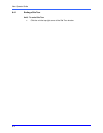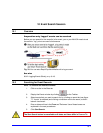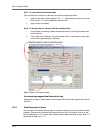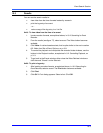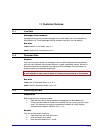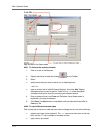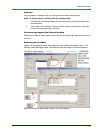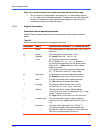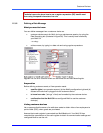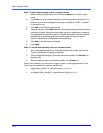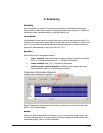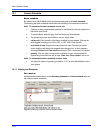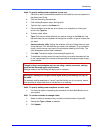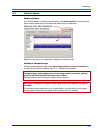
View: Operator Guide
11–4
!
!!
!124 For a quick reminder of the labels associated with serial device data
• Run a Search for Events session, as explained in 10: Event Search Session,
p. 10–1, and click the Data Recording tab. The data/rules are listed along with
its labels. These are the same labels that are assigned to data during the
maintenance session for the serial device.
11.3.1 Regular Expressions
Technical note on special characters
Table 20 lists the special characters that can be used for performing an extended
search.
Table 20
Search rule: regular expressions and special characters
Character Name Searches for a match of (…) within the rule
.
period
Any one character. Ex: .ire finds “wire”, “tire”, “4ire”,
and so on.
[ ]
square
brackets
Each character in the brackets, in turn.
Ex: c[aou]t finds “cat”, “cot” or “cut”.
^
caret
(a) Characters that are not in brackets.
Ex: r[^a] finds “rb”, “rc”, “rA”, “r1” and so on.
(b) A rule at the beginning of a line, when placed
before it. Ex: ^Hume finds only “Hume” at the
beginning of lines.
(c) A control code, when used with a backslash.
Ex. \^C finds the “control-C” control code.
$
dollar sign A rule at the end of a line, when placed after it.
Ex: Kant$ finds only “Kant” at the end of lines.
-
dash A range of characters set in square brackets.
Ex: [a-z] matches any lower case letter.
+
plus sign The character that it follows, once or more.
Ex: tu+ finds “tu”, “tuu”, “tuuu”, and so on.
*
asterisk The character that it follows, whether absent,
occurring once or more. Ex: mo*e finds “me”, “moe”,
“mooe”, “moooe”, and so on.
Ex: c[au]*t finds ct, cat, caat, cut, cuut and so on.
?
question mark The character that it follows, whether absent or
occurring once. Ex: me?y matches either “mey” or
“my”.
\
backslash
(a) Chars, when placed prior. Ex: \? Finds “?”
(b) Control character, when placed before their
symbols. Ex: \e an Esc (escape), \f a form feed, \n a
new line, \r a carriage return and so on.



